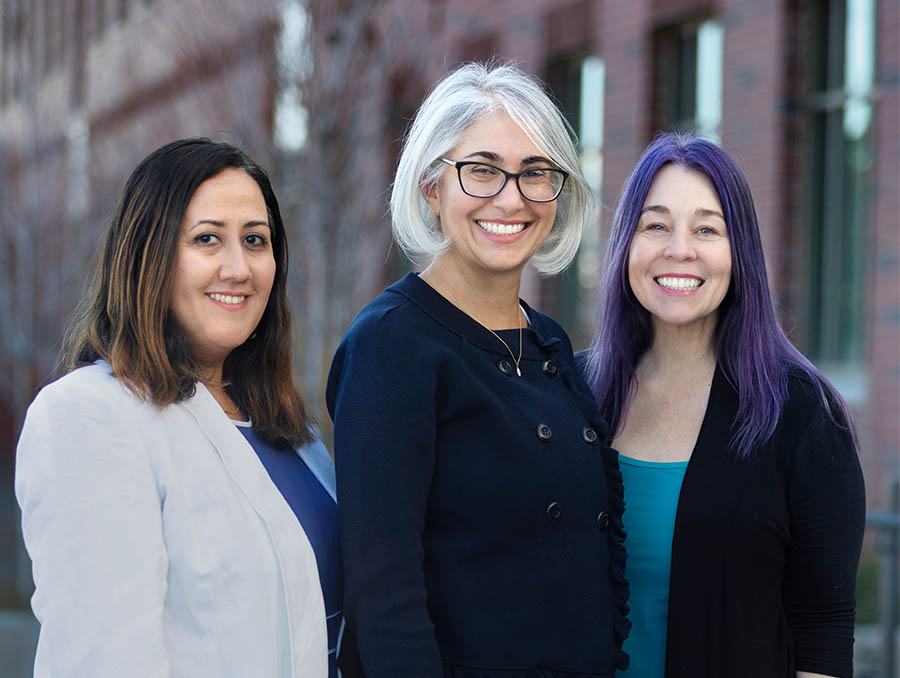Leading women in the chemical engineering community and protein engineering research are twin interests of Chemical & Materials Engineering (CME) Assistant Professor Maryam Raeeszadeh-Sarmazdeh.
Sarmazdeh recently began a year-long term as chair for the Women in Chemical Engineering (WIC) Community, a group within the American Institute of Chemical Engineers. She also is set to begin a research project, collaborating with colleagues from University of Nevada, Reno School of Medicine, into a possible therapy for preterm labor.
“It is great news for our department, as it shows some of the cutting-edge research being done by our faculty,” Associate Professor and CME Chair Victor Vasquez said. “We are very proud of Maryam’s achievements and look forward to the research outcomes of this project. In addition to research, Maryam’s leadership excels in service to the profession and the community.”
Supporting women in STEM
On the eve of International Day of Women and Girls in Science Feb. 11, the data on women in engineering in the United States points to a continued imbalance. While women make up 48% of all workers — nearly half of all workers — only 27% of workers in Science, Technology, Engineering and Math (STEM) are women, and of that, 15% are in engineering occupations, according to the U.S. Census Bureau.
Sarmazdeh says it is not a one-person job to fix equity issues in engineering: creating an inclusive environment of support for women in STEM and engineering will take allies and advocates from all genders and backgrounds. Sarmazdeh served as WIC vice-chair last year and will serve as past chair in 2024. WIC provides networking and mentoring opportunities for females in chemical engineering.
Protein engineering to develop novel preterm labor therapeutics
Protein engineering — basically modifying polypeptides in a protein molecule, usually to solve a medical problem — is a research focus area for Sarmazdeh. The Sarmazdeh Lab aims to bring engineering and life sciences together to develop novel technologies with applications in medicine and sustainability.
Her latest funded research in this area is a two-year, $398,512 grant from the National Institutes of Health through the Eunice Kennedy Shriver National Institute of Child Health and Human Development (NICHD) program for project titled: “Selective targeting of matrix metalloproteinases for developing preterm labor therapeutics.”
Sarmazdeh and her collaborators at the School of Medicine, Associate Professor Heather Burkin and Dr. Neda Etezadi-Amoli, are looking at specific enzymes in the matrix metalloproteinase family (enzymes that break down proteins) that may have a role in preterm labor.
Specifically, the research team is interested in selective inhibition of specific metalloproteinases that the Burkin Lab identified as regulators of uterine contraction. The Sarmazdeh research group will engineer the effective enzyme inhibitors, and Burkin’s research team will investigate the effects of natural inhibitors and Samazdeh’s engineered variants in models for preterm labor.
The team of three female scientists and engineers is excited to tackle this health-related issue by using their expertise across bioengineering and life science.
“The future of engineering, sciences, and technology advancement lies within nature,” Sarmazdeh said. “As engineers, we want to solve problems and biological systems have the answer to many of the problems humankind is facing.”















